Breeds of Sheep
There are 45 recognized sheep breeds in India. Based on the agro-ecological conditions, Indian sheep can be divided into four regions. India can be divided on the basis of the agro-ecological conditions and type of sheep into four regions. .
| North Temperate | North-Western Arid and Semi Arid | Southern Peninsular | Eastern |
|---|---|---|---|
| Bhakarwal (CW) | Chokla (CW) | Bellary (MCW) | Balangir (MCW) |
| Changthangi (CW) | Hissardale (AW) | Coimbatore (MCW) | Bonpala (MCW) |
| Gaddi (CW) | Jaisalmeri (MCW) | Daccani (M) | Chottanagpuri (MCW) |
| Gurez (CW) | Jalauni (MCW) | Hassan (M) | Ganjam (MCW) |
| Karnah (AW) | Kheri (MCW) | Kanguri (M) | Garole (M) |
| Kashmir Merino (AW) | Magra (CW) | Kilakarsal (M) | Tibetan (CW) |
| Poonchi (CW) | Malpura (MCW) | Madras Red (M) | |
| Rampur Bushair (CW) | Marwari (MCW) | Mandya (M) | |
| Muzaffarnagari (MCW) | Mecheri (M) | ||
| Nali (CW) | Nellore (M) | ||
| Patanwadi (CW) | Nilgiri (AW) | ||
| Pugal (MCW) | Rammand White (M) | ||
| Sonadi (MCW) | Tiruchy Black (M) | ||
| Munjal (M) | Vembur (M) | ||
| Within parenthesis is the major product of the breed. (AW), Apparel wool; (CW), Carpet wool; (MCW), Mutton and Carpet wool; (M), Mutton. | |||
Recognized breeds of sheep in India (Source: NBAGR, Karnal)
| S.No | Breed | Breeding Tract | Important Features |
|---|---|---|---|
| 1 | Balangir | Balangir, Sambalpur and Sundergarh of Odisha. | Reared for Meat and Wool. Fleece is extremely coarse, hairy and open. Legs and belly are devoid of wool. The fiber is Coarse/Carpet type. |
| 2 | Bellary | Bellari, Davanagere Haveri and Chitradurga districts of Karnataka | Reared for Meat and Wool. About 89% of rams are horned, Only ~ 9.5% ewes horned, remaining polled. Horns are thick at the base, corrugated & curved in rams with pointed tips. The fiber is Coarse/ Carpet type. |
| 3 | Bhakarwal | Jammu and Kashmir | Reared for Meat and Wool. Animals are maintained on open grazing in the natural grasslands (migratory) with no supplementary feeding. It is sturdy and excellent climber. The fiber is Coarse/ Carpet type. |
| 4 | Bonpala | Sikkim | Reared for Meat and Wool. Typical migratory and grazes at different altitudes. The fiber is Coarse/Carpet type. |
| 5 | Changthangi | Jammu and Kashmir | Reared for Meat and Wool. Well adapted to the adversities of snow. The fiber is Coarse/Carpet type. |
| 6 | Chokla | Nagaur, Sikar and Churu of Rajasthan | Reared for Meat and Wool. Fine carpet quality fleece production and survival on scarce fodder resources under field conditions during drought Sheep are kept in the highland and never brought down to low hills. Both are polled. |
| 7 | Chottanagpuri | Different regions of Jharkhand and West Bengal | Reared for Meat and Wool. Breed is maintained mainly by tribals of Jharkhand. The fiber is Coarse/Carpet type. |
| 8 | Coimbatore | Coimbatore and Erode of Tamilnadu | Reared for Meat and Wool. The flocks are migratory and may migrate to the nearby states of Kerala and Karnataka. High Milk yield on 50th day is 171.5g with a range of 140 - 208g. |
| 9 | Deccani | Karnataka, Andhra Pradesh and Maharashtra | Reared for Meat and Wool. The breed is known after the name of geographical area of its origin i.e. Deccan plateau. Animals are housed only during night. |
| 10 | Gaddi | Different regions of Himachal Pradesh | Reared for Meat and Wool. The breed derives its name from the Gaddi tribes maintaining these animals. The fiber is Coarse/Carpet type. |
| 11 | Ganjam | Different regions of Odisha | Reared mainly for meat purpose. Coat colour ranges from brown to dark tan, the animals may have white spots on body. |
| 12 | Garole (Meda, Bheda) | Different regions of West Bengal | Reared mainly for meat purpose. It is a small-sized breed known for its prolificacy and adaptation to the saline marshy land. They have the ability to graze in knee-deep conditions in marshy land. The fiber is Coarse/Carpet type. |
| 13 | Gurez | Baramulla district of Jammu and Kashmir | Reared for Meat and Wool. The name is derived from the home tract “Gurez” subdivision. Multiple horns detected in some animals of both the sexes in Gurez breed. |
| 14 | Hassan | Hassan district of Karnataka | Reared for Meat and Wool. Few flocks migrate during March, April and May within the state. The fiber is Coarse/Carpet type. |
| 15 | Jaisalmeri | Different regions of Rajasthan | Reared for Meat and Wool. Long drooping ears, generally with a cartilaginous appendage. In certain parts, the flocks may migrate a little for water during summer months. The fiber is Coarse/Carpet type. |
| 16 | Jalauni | Uttar Pradesh and Madhya Pradesh | Reared for Meat and Wool. Characterized by flat land with small hill hocks spreading over major part of the breeding tract. Both are polled. The fiber is Coarse/Carpet type. |
| 17 | Karnah | Jammu and Kashmir | Reared for Meat and Wool. Important sheep breed of the region that yields white fleece of long wool fibres usable both under hand spinning and by machine. Breed has unique ability to walk long distances in hilly tract. |
| 18 | Kenguri (Tenguri) | Karnataka | Reared mainly for meat purpose. The body coat is dark brown or coconut coloured. Some of the Kenguri sheep have black belly and are known as JODKA. |
| 19 | Kilakarsal | Tamil nadu | Reared mainly for meat purpose. They have hairs on their body. |
| 20 | Madras Red (Chennai Sigappu) | Different regions of Tamil nadu | Reared mainly for meat purpose. Typical prominent Roman nose and the skin colour is red. Naicker and Pillai are the two communities responsible for the development of the breed. They have hairs on their body. |
| 21 | Macherla | Different regions of Andhra Pradesh | Reared mainly for meat purpose. Macherla sheep has bicolour with combinations of white and black or brown and white. The lambing percentage observed in Macherla sheep is higher than the other hairy sheep. |
| 22 | Magra | Different regions of Rajasthan | Reared for meat and wool purpose. Both are polled. They have wool on their body. The animals are adapted to graze shrubs, pods, leaves and short grasses. |
| 23 | Malpura (Malpuri) | Different regions of Rajasthan | Reared for meat and wool purpose. Both are polled. An excellent mutton breed of north-western semiarid region of India. The fiber is Coarse/Carpet type. |
| 24 | Mandya (Bannur, Bandur) | Southern Karnataka region | Reared mainly for meat purpose. Animals are unique in mutton quality. Coat is extremely coarse and hairy. Migration in some flocks during March, April and May within the state. The fiber is Coarse/Carpet type. |
| 25 | Marwari | Different regions of Rajasthan and Gujarat | Reared for meat and wool purpose. Both sexes are polled. Sheep are quite hardy and adaptable to arid climate. They can walk long distances for grazing. Flocks of Marwari sheep go on migration for a period of six months. The fiber is Coarse/Carpet type. |
| 26 | Mecheri | Different regions of Tamil nadu | Reared for meat and skin purpose. The Skin is of the finest quality among all the sheep breeds in India and is highly priced. Generally body colour is light tan with darker shade over the neck. White patches are also seen in many animals. |
| 27 | Muzzafarnagri (Bulandshahri) | Different regions of Uttar Pradesh and Uttarakhand | Reared for meat and wool purpose. It is one of the heaviest and largest sheep breeds of India. Both sexes are polled. |
| 28 | Nali | Different regions of Rajasthan and Haryana | Reared for meat and wool purpose. Sheep are accustomed to night grazing and stubble grazing. Both sexes are polled. The fiber is Coarse/Carpet type. |
| 29 | Nellore | Andhra Pradesh | Reared mainly for meat purpose. Tall animal with little hair except at brisket, withers and breech. Horns are found in males only. They have hairs on their body. |
| 30 | Nilgiri | Tamilnadu | Reared for meat and wool purpose. Sheep is a woolly breed. Well adapted to the agro climatic and physiographic conditions of Nilgiri hills. Low economic value for wool and hence, meat is preferred. |
| 31 | Patanwadi | Different regions of Gujarat | Reared for meat and wool purpose. Face colour is light to dark brown. Fleece is white. Both sexes are polled. The fiber is Coarse/Carpet type. |
| 32 | Poonchi | Jammu and Kashmir | Reared mainly for wool purpose. In summer, the animals graze on highland pasture. The flocks are mostly stall fed in winter. Predominantly white in colour, including the face, but spotted animals are also seen. |
| 33 | Pugal (Rataanaa) | Rajasthan | Reared for meat and wool purpose. Most flocks are stationary. In summer, the flocks move to south-eastern parts of Rajasthan. Grazing during night in summer months is common. Both are polled. The fiber is Coarse/Carpet type. |
| 34 | Ramnad White (Kilakathai adu) | Tamilnadu | Reared mainly for meat purpose. Predominantly white with black colour on the ventral aspect of the body. Local migration from March to May. They have hairs on their body. |
| 35 | Rampur Bushair | Himachal Pradesh | Reared for meat, wool and pelt purpose. Animals are hardy, can travel long distances and can thrive on scanty pastures. Mainly apparel / superior carpet type wool, followed by meat. |
| 36 | Shahabadi | Bihar | Reared for meat and wool purpose. Fleece colour is mostly grey, sometimes with black spots. Both are polled. The fiber is Coarse/Carpet type. |
| 37 | Sonadi | Different regions of Rajasthan | Reared for meat and wool purpose. Both are polled. Local migration in summer in search of water and feed. The fiber is Coarse/Carpet type. |
| 38 | Tibetan | Different regions of Arunachal Pradesh and Sikkim | Reared for meat and wool purpose. Mostly white with black or brown face. Brown or white spots are also observed on the body. The fiber quality is fine. |
| 39 | Tiruchi Black | Different regions of Tamilnadu | Reared mainly for meat purpose. Horns are found in males only and body is completely black. The fiber is Coarse/Carpet type. The body is covered with short hairs. |
| 40 | Vembur | Tamilnadu | Reared mainly for meat purpose. Tall animals. Ears are long (14.95 cm) and drooping. The body is covered with short hairs. |
| 41 | Katchaikatty Black | Tamilnadu | Main uses include sheep hair, ram fighting, meat and manure. Animals are well known for ram fighting during festivals. Reared in small flocks. |
| 42 | Chevaadu | Tamilnadu | Main uses include meat, skin, manure, religious and cultural use. Unique economically important breed as it survives on dry land as well as near coastal area ecosystem. |
| 43 | Kendrapada | Different regions of Odisha | Reared mainly for meat purpose. An excellent medium stature meat animal with high prolificacy. More than 75% ewes produce multiple births. Adapted to varied agro-climatic conditions. These sheep are popular for good quality skin, manure and low fat mutton. Some uncastrated males or rams are used for religious purpose. |
| 44 | Panchali | Different regions of Gujarat | Mainly reared for milk, meat, manure and fibre/wool. The breed has excellent migratory capacity. These sheep generally give only one lambing per year out of which 83 percent are singles, 16 percent twins and rest triplets or quadruplets. |
| 45 | Kajali | Different regions of Punjab | It is one of the heaviest sheep breeds in India. Reared primarily for mutton along with wool and manure purpose. The fiber is Coarse/Carpet type. |
Bellary:

Female

Male
Chevaadu:

Female
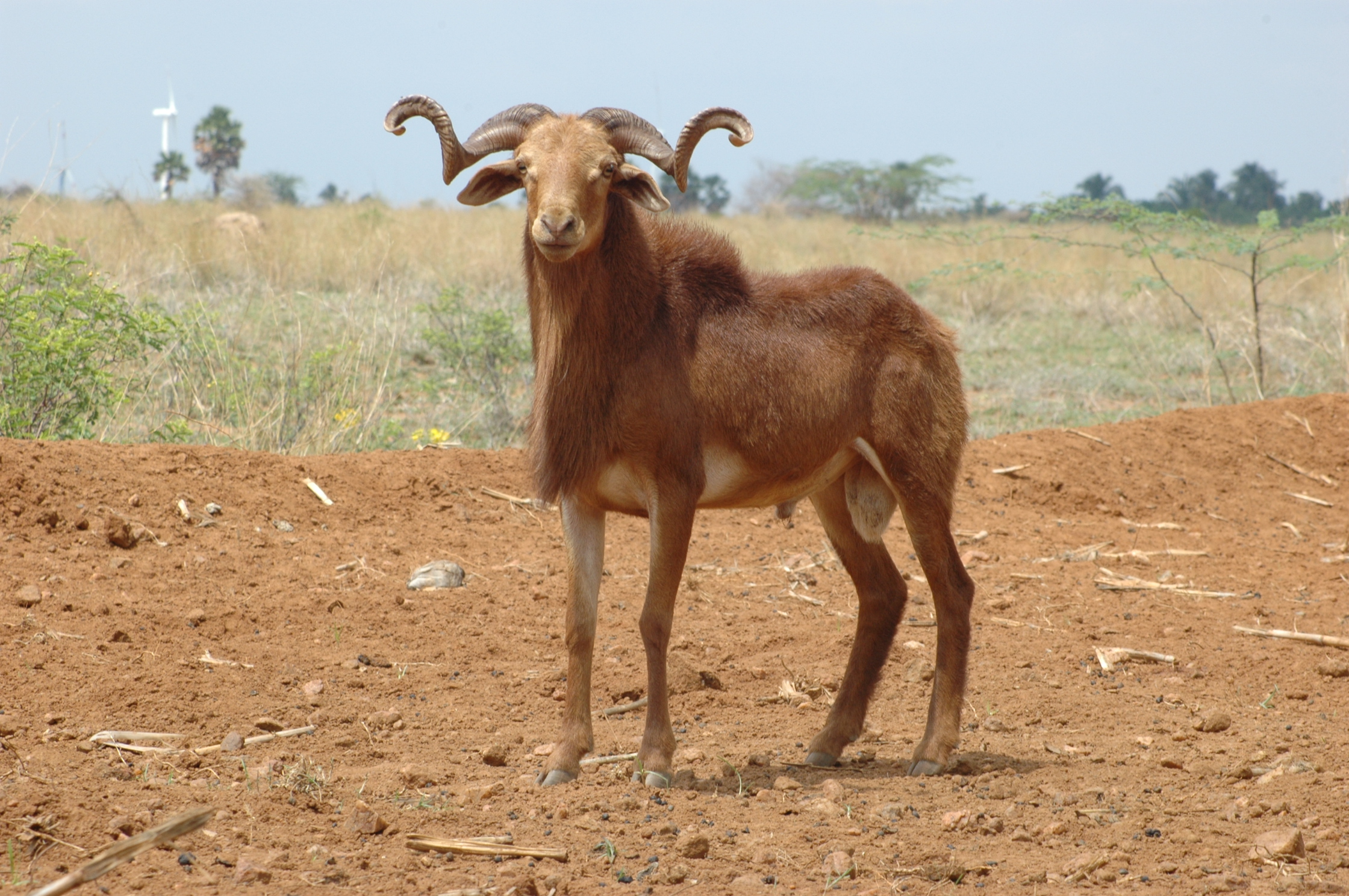
Male
Gaddi:
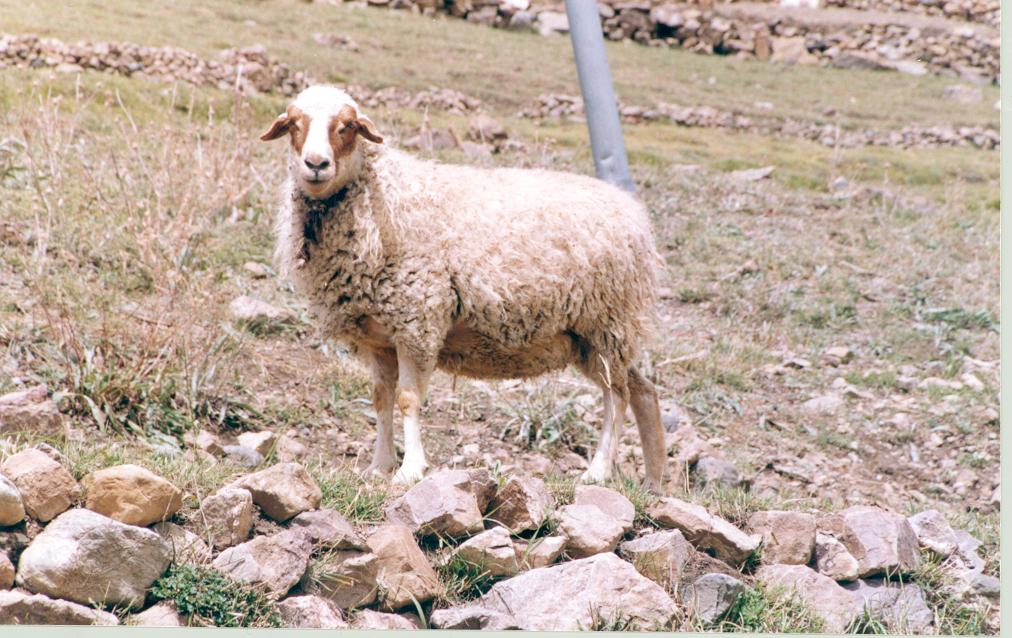
Female
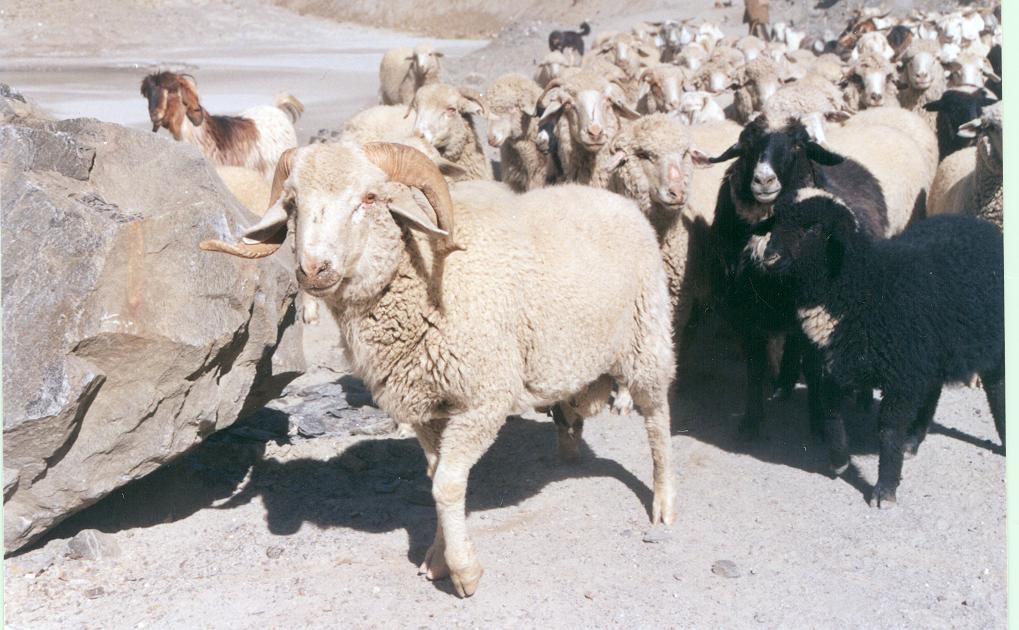
Male
Mandya:
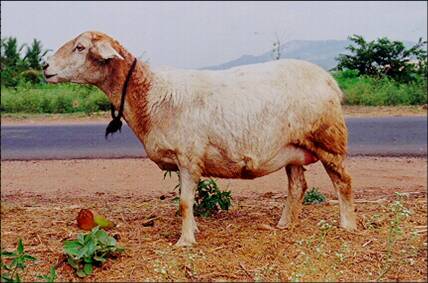
Female
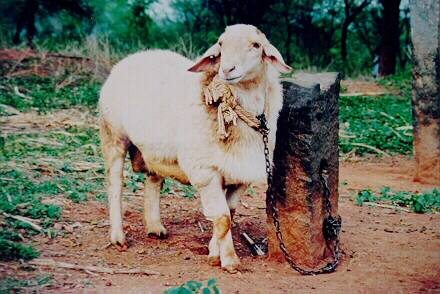
Male
Nellore:
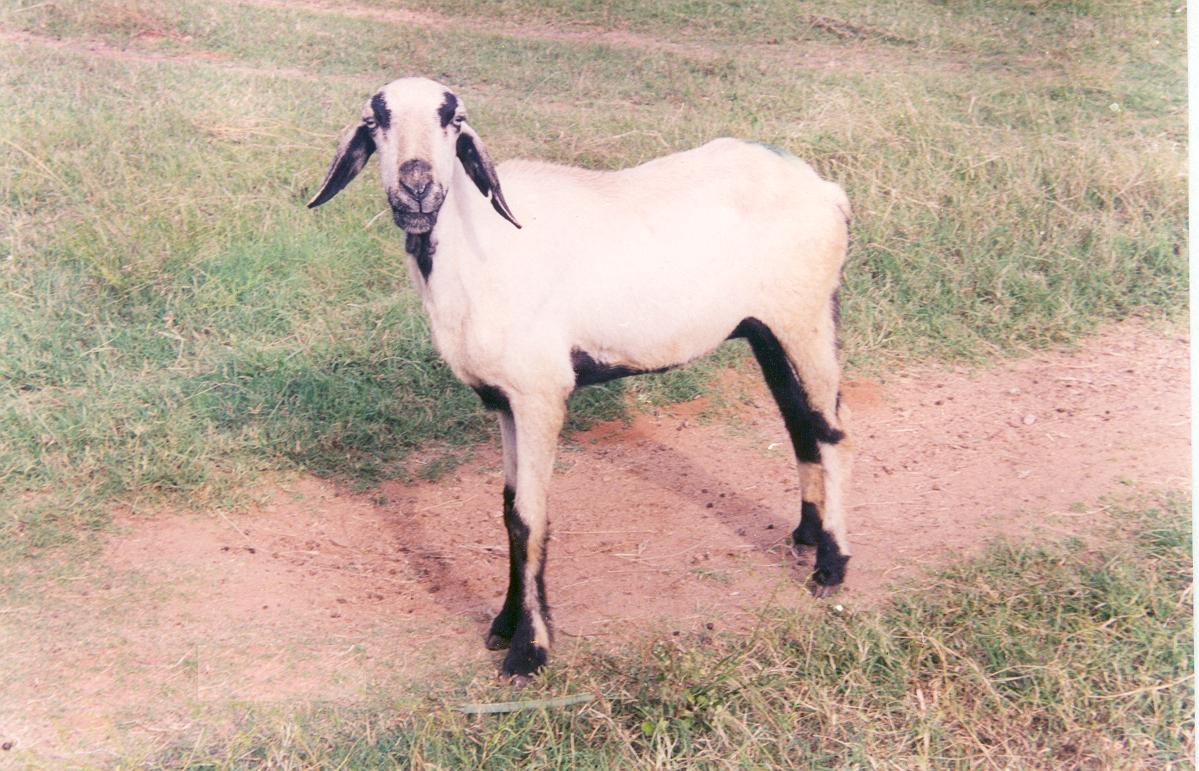
Female

Male
Tibetan:
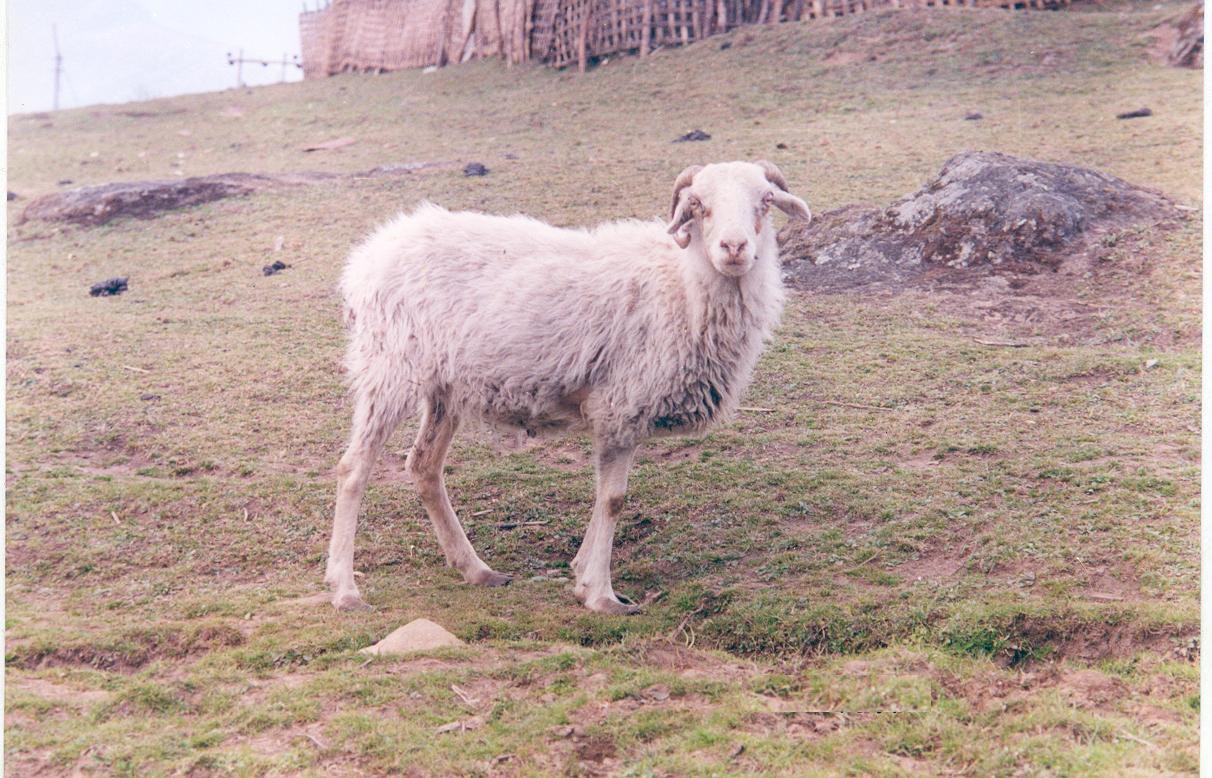
Female
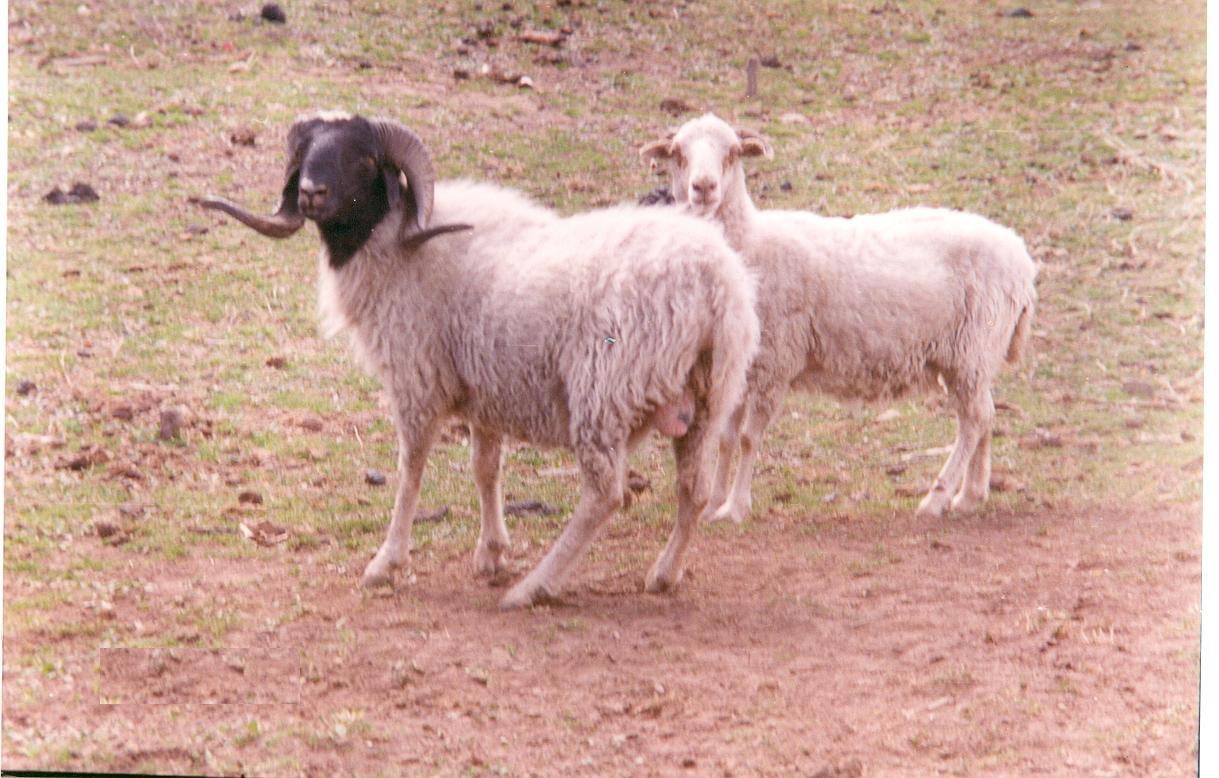
Male
Vembur:
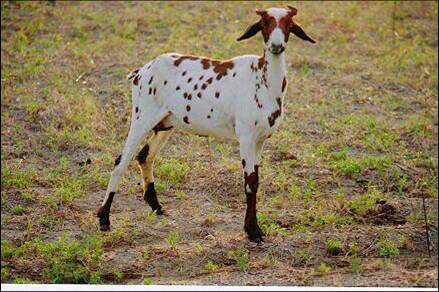
Female
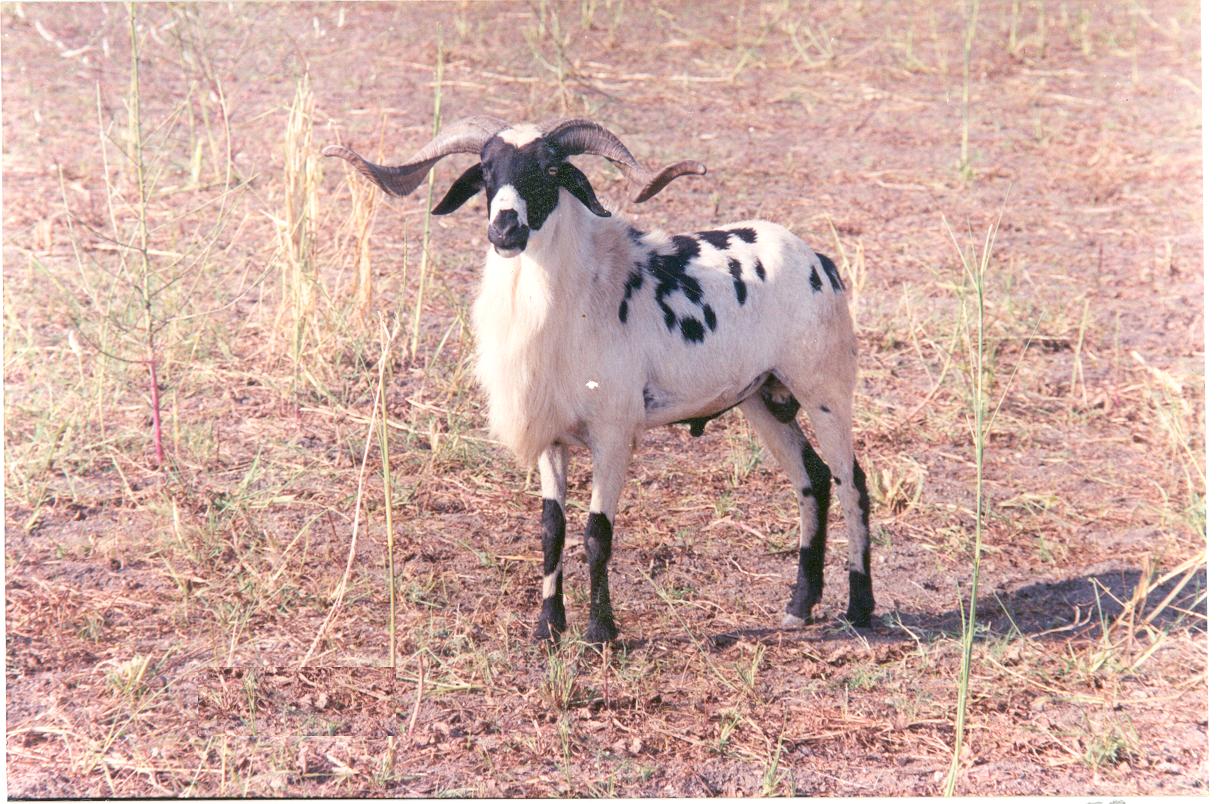
Male
Tiruchi Black:
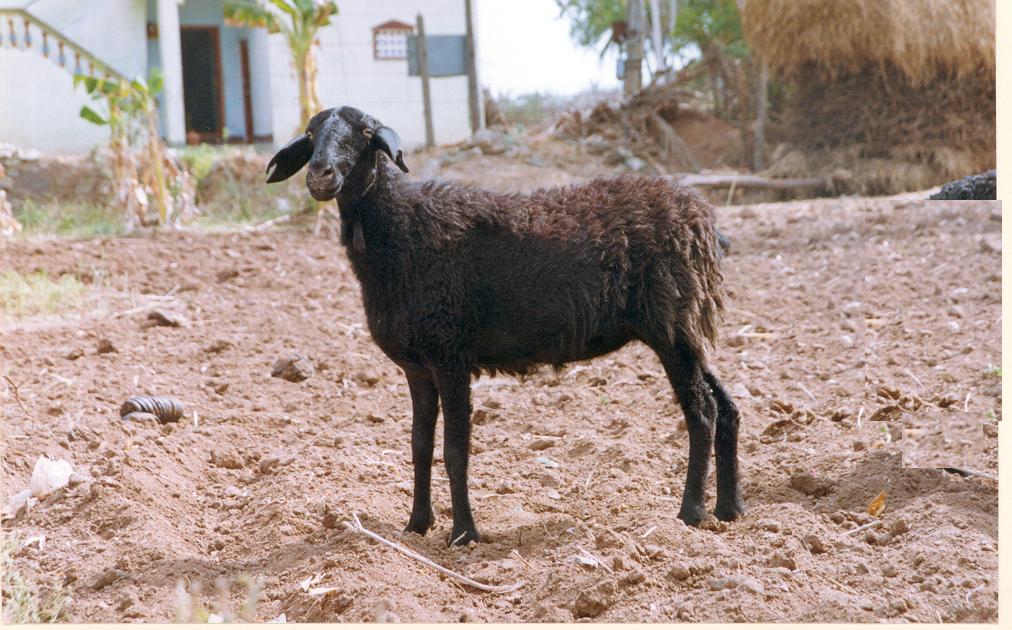
Female
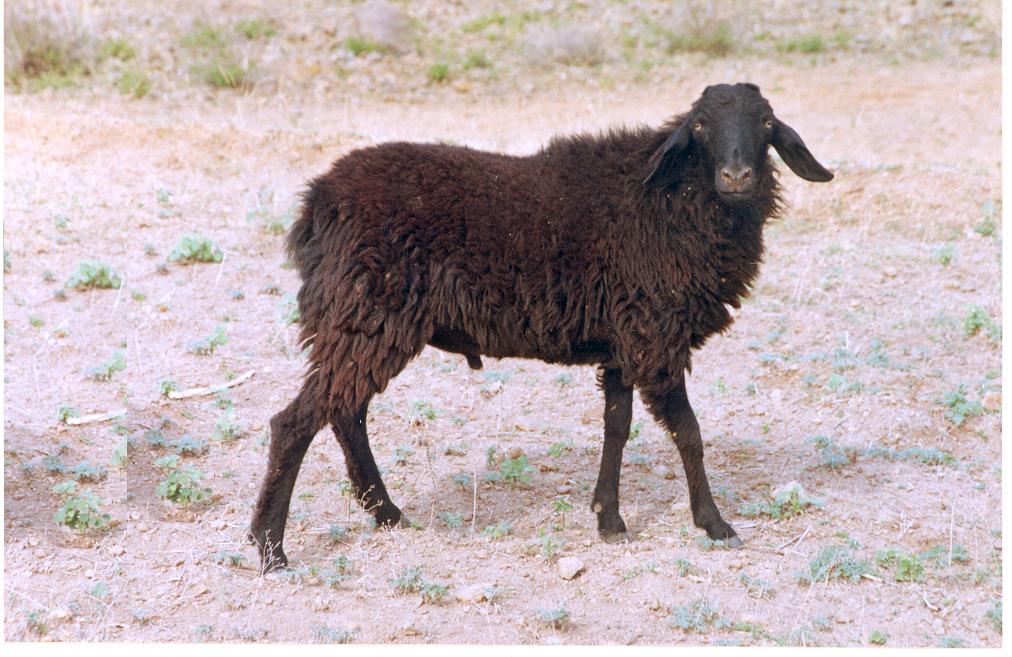
Male
Exotic breeds of sheep
A. Fine wool breeds
1.Merino: Native of Spain - origin for most of the wool breeds in the world. Colour-white. Fleece yield is male: 4-5 kg and ewes 3-4 kg/ annum. Merinos have large number of skin folds.
2. Rambouillet: Developed from Merinos in France. They are large, rugged, fast growing sheep and are good wool producers. Skin is pink. Ewes are good mothers, and prolific. Average wool yield is 4.5 to 5.5 kg.
B. Mutton breeds
1.Suffolk: Native of U.K. Large animals with black face, ears and legs. Head and ears are entirely free from wool. Average wool yield is 2-3 kg. Mature rams weigh 100-135 kg and ewes from 70-100 kg.
2. Dorset:Native of U.K with polled and horned type. Face, ears and legs white in colour and free from wool. Wool yield is 2.75 to 3.25
C. Dual purpose breeds
1.Corriedale:Native of New Zealand. The parent breeds involved in developing Corriedale are Lincoln, Leicester and Merino. Adult rams: 80 to 100 kg Ewes: 55 to 85 kg. Annual wool production: 4.5 to 5.5 kg. Both sexes are polled. Colour is white and may have black spots.
Selection of sheep for breeding
- It is necessary to select suitable improved breed of sheep available in particular area.
- Crossbred sheep are available for purchase from state Government / Government of India sheep breeding farms.
- Ewes can be purchased in regular sheep markets or from breeders in villages, while male sheep (rams) of exotic / crossbred from Government farms.
- It is desirable to purchase healthy animals of 12-18 months of age.
- A certificate regarding age and health of sheep should be obtained from the concerned veterinarian.
- The animals purchased have to be identified by fixing ear tags.
- Sheep should be vaccinated for important diseases like sheep-fox and enterotoxaemia.
- An entrepreneur should have a unit of 20-30 ewes and one ram.

